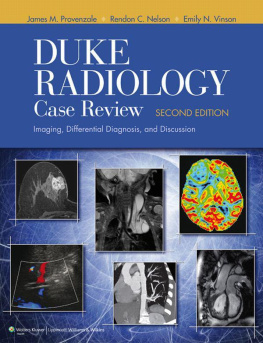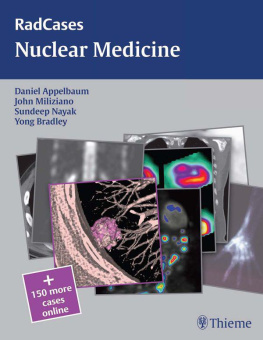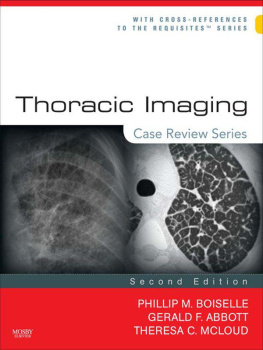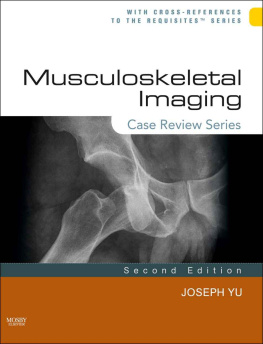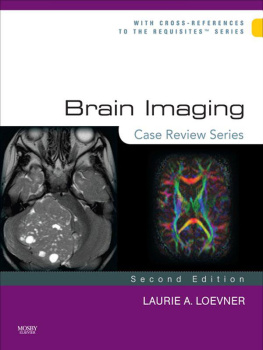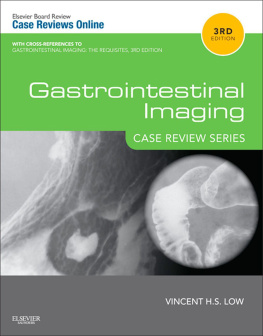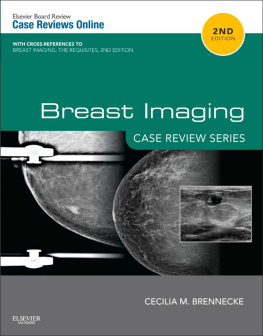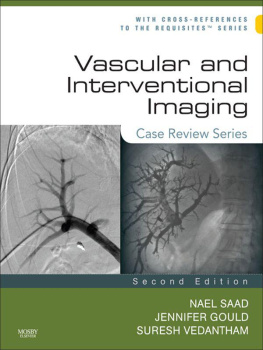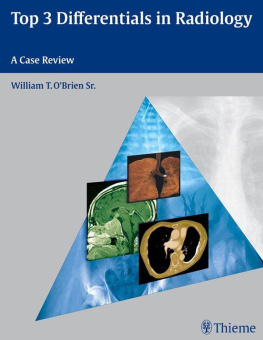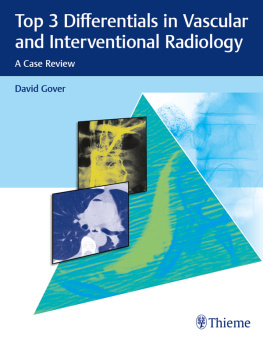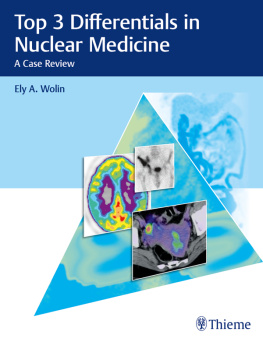Notice
Medicine is an ever-changing science. As new research and clinical experience broaden our knowledge, changes in treatment and drug therapy are required. The authors and the publisher of this work have checked with sources believed to be reliable in their efforts to provide information that is complete and generally in accord with the standards accepted at the time of publication. However, in view of the possibility of human error or changes in medical sciences, neither the authors nor the publisher nor any other party who has been involved in the preparation or publication of this work warrants that the information contained herein is in every respect accurate or complete, and they disclaim all responsibility for any errors or omissions or for the results obtained from use of the information contained in this work. Readers are encouraged to confirm the information contained herein with other sources. For example and in particular, readers are advised to check the product information sheet included in the package of each drug they plan to administer to be certain that the information contained in this work is accurate and that changes have not been made in the recommended dose or in the contraindications for administration. This recommendation is of particular importance in connection with new or infrequently used drugs.
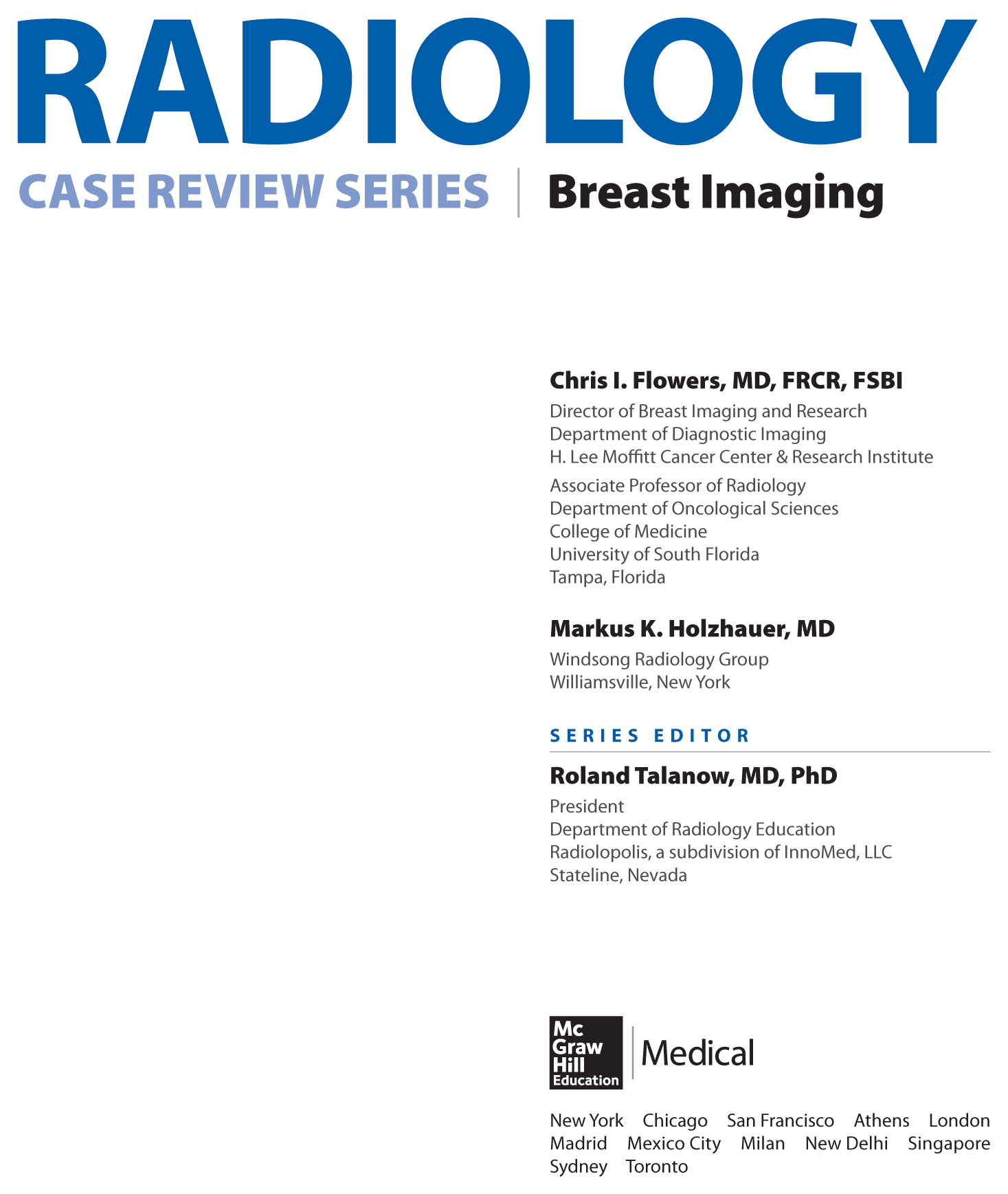
Copyright 2014 by McGraw-Hill Education. All rights reserved. Except as permitted under the United States Copyright Act of 1976, no part of this publication may be reproduced or distributed in any form or by any means, or stored in a data base or retrieval system, without the prior written permission of the publisher.
ISBN: 978-0-07-178763-5
MHID: 0-07-178763-1
The material in this books also appears in the print version of this title: ISBN: 978-0-07-178719-2, MHID: 0-07-178719-4.
eBook conversion by codeMantra
Version 1.0
All trademarks are trademarks of their respective owners. Rather than put a trademark symbol after every occurrence of a trademarked name, we use names in an editorial fashion only, and to the benefit of the trademark owner, with no intention of infringement of the trademark. Where such designations appear in this book, they have been printed with initial caps.
McGraw-Hill Education books are available at special quantity discounts to use as premiums and sales promotions or for use in corporate training programs. To contact a representative, please visit the Contact Us pages at www.mhprofessional.com.
TERMS OF USE
This is a copyrighted work and McGraw-Hill Education and its licensors reserve all rights in and to the work. Use of this work is subject to these terms. Except as permitted under the Copyright Act of 1976 and the right to store and retrieve one copy of the work, you may not decompile, disassemble, reverse engineer, reproduce, modify, create derivative works based upon, transmit, distribute, disseminate, sell, publish or sublicense the work or any part of it without McGraw-Hill Educations prior consent. You may use the work for your own noncommercial and personal use; any other use of the work is strictly prohibited. Your right to use the work may be terminated if you fail to comply with these terms.
THE WORK IS PROVIDED AS IS. McGraw-Hill Education AND ITS LICENSORS MAKE NO GUARANTEES OR WARRANTIES AS TO THE ACCURACY, ADEQUACY OR COMPLETENESS OF OR RESULTS TO BE OBTAINED FROM USING THE WORK, INCLUDING ANY INFORMATION THAT CAN BE ACCESSED THROUGH THE WORK VIA HYPERLINK OR OTHERWISE, AND EXPRESSLY DISCLAIM ANY WARRANTY, EXPRESS OR IMPLIED, INCLUDING BUT NOT LIMITED TO IMPLIED WARRANTIES OF MERCHANTABILITY OR FITNESS FOR A PARTICULAR PURPOSE. McGraw-Hill Education and its licensors do not warrant or guarantee that the functions contained in the work will meet your requirements or that its operation will be uninterrupted or error free. Neither McGraw-Hill Education nor its licensors shall be liable to you or anyone else for any inaccuracy, error or omission, regardless of cause, in the work or for any damages resulting therefrom. McGraw-Hill Education has no responsibility for the content of any information accessed through the work. Under no circumstances shall McGraw-Hill Education and/or its licensors be liable for any indirect, incidental, special, punitive, consequential or similar damages that result from the use of or inability to use the work, even if any of them has been advised of the possibility of such damages. This limitation of liability shall apply to any claim or cause whatsoever whether such claim or cause arises in contract, tort or otherwise.
To our wives and families who have had to put up
with endless hours of poring over cases and our computers,
when we could have been taking the family to the Mall or
off on road trips. Thank you for your patience,
and here is the reward.
Contents



Series Preface
M aybe I have an obsession for cases, but when I was a radiology resident I loved to learn especially from cases, not only because they are short, exciting, and funsimilar to a detective story in which the aim is to get to the bottom of the casebut also because, in the end, thats what radiologists are faced with during their daily work. Since medical school, I have been fascinated with learning, not only for my own benefit but also for the sake of teaching others, and I have enjoyed combining my IT skills with my growing knowledge to develop programs that help others in their learning process. Later, during my radiology residency, my passion for case-based learning grew to a level where the idea was born to create a case-based journal: integrating new concepts and technologies that aid in the traditional learning process. Only a few years later, the Journal of Radiology Case Reports became an internationally popular and PubMed indexed radiology journalpopular not only because of the interactive features but also because of the case-based approach. This led me to the next step: why not tackle something that I especially admired during my residency but that could be improvedcreating a new interactive case-based review series. I imagined a book series that would take into account new developments in teaching and technology and changes in the examination process.
As did most other radiology residents, I loved the traditional case review books, especially for preparation for the boards. These books are quick and fun to read and focus in a condensed way on material that will be examined in the final boards. However, nothing is perfect and these traditional case review books had their own intrinsic flaws. The authors and I have tried to learn from our experience by putting the good things into this new book series but omitting the bad parts and exchanging them with innovative features.
What are the features that distinguish this series from traditional series of review books?
To save space, traditional review books provide two cases on one page. This requires the reader to turn the page to read the answer for the first case but could lead to unintentional cheating by seeing also the answer of the second case. Doesnt this defeat the purpose of a review book? From my own authoring experience on the USMLE Help book series, it was well appreciated that we avoided such accidental cheating by separating one case from the other. Taking the positive experience from that book series, we decided that each case in this series should consist of two pages: page 1 with images and questions and page 2 with the answers and explanations. This approach avoids unintentional peeking at the answers before deciding on the correct answers yourself. We keep it strict: one case per page! This way it remains up to your own knowledge to figure out the right answer.


